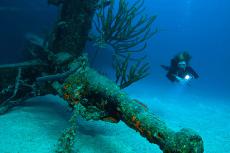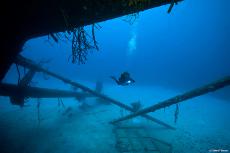Bonaire - A Diver's Paradise
The small island of Bonaire is part of the island group called the Dutch Caribbean and is located in the southern part of the Caribbean Sea near the coast of Venezuela. Bonaire is formed by volcanic rock about 60 million years ago and later covered with coral stone. These processes created a landscape with hills in the northwest, terraces in the middle and flatland in the south.
Tags & Taxonomy
Because there was no gold or other precious metal on the island and because the conditions meant no agricultural possibilities, the Spanish decided not to build a colony. The local Indians were captured and brought away as slaves to work on plantations in South America. In 1526, the Spanish brought cattle to the island, which is the main reason you can encounter donkeys and goats in the wild. In 1633, the Dutch conquered Bonaire from the Spanish and brought slaves to the island to work in salt extraction; the slaves lived in very small huts (about two meters high),which can still be found near the seashore in the southern part of the island.
Bonaire is 40 kilometers in length and 12 kilometers wide and today has a population of around 14,500. The official language is Dutch. About 75 percent of the locals speak Papiamento, which is a mix of Dutch, Spanish and Portuguese; but also English and Spanish are widely spoken. The main resources of income on the Island are salt extraction, which is done in the south of the island in an environmentally friendly way, and of course, tourism. Bonaire is well known for its underwater parks and popular with divers worldwide, so it is not surprising that all the license plates of the cars in Bonaire state: “Divers paradise”.
I’ve been coming back to Bonaire for several years now; the combination of the friendly climate, the relaxed atmosphere, the easy diving and the relative small size of the island make for a perfect hideaway ....
Download the full article ⬇︎

Originally published
X-Ray Mag #30
Bonaire Divers’ Paradise by JP Bresser :: Scott Johnson presents Turks & Caicos Islands in the Caribbean and Diving Mysteries Off North Carolina, USA :: Roddenberry Dive Team and the Star Trek Legacy :: Treasure Hunting in the Florida Keys by Millis Keegan :: Shipwreck Treasure - 17th Century Solid Gold Grooming Tool by Carol Tedesco :: Barb Roy tells us about the Reefs of Steel - Artificial Reefs of British Columbia :: Ocean Arts Emporium and 19th Century Blaschka Glass Invertebrates is edited by Gunild Symes :: Gennady Misan tells about an almost fatal dive in Lake Baikal :: Bonnie McKenna explains about Jelly fish Ecology and Tony White explains about special UW Photography Techniques :: Unique Dive site: Crystal River, Florida


















